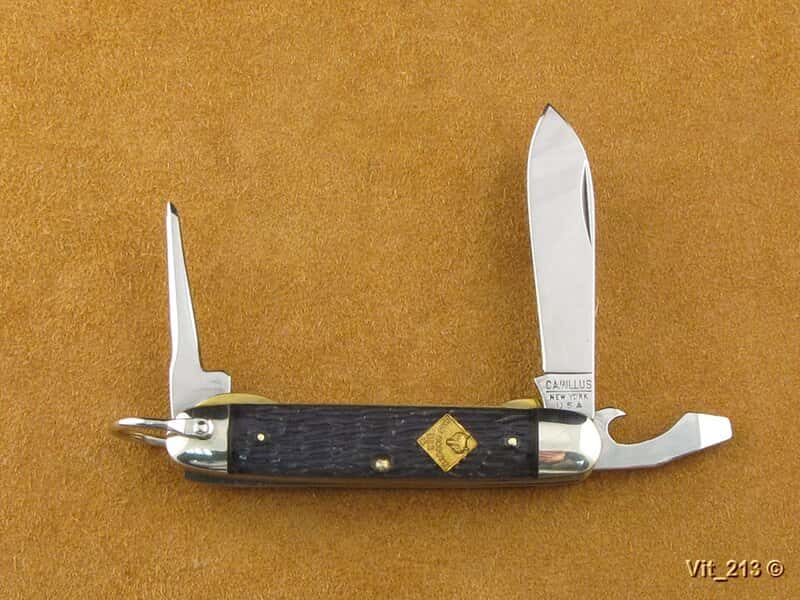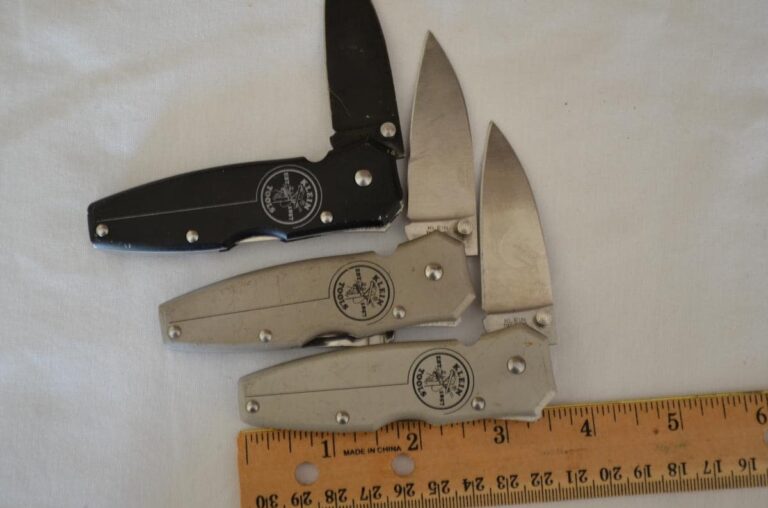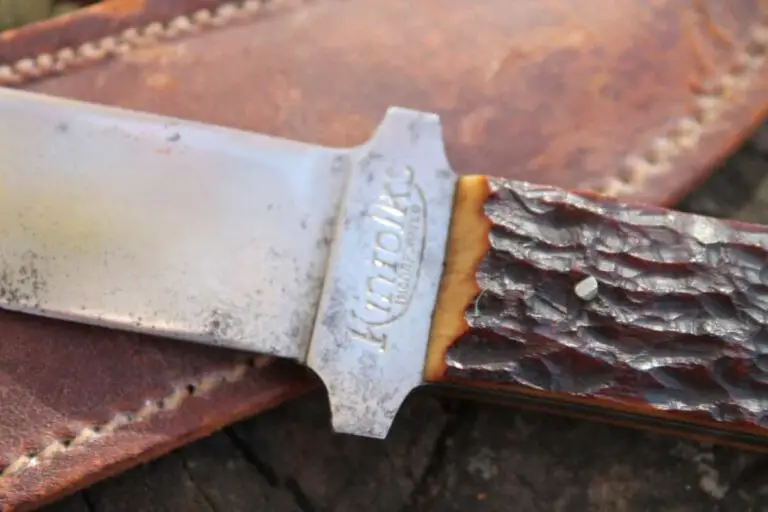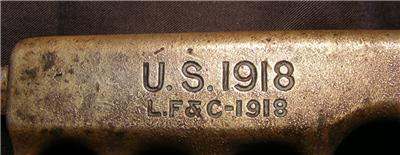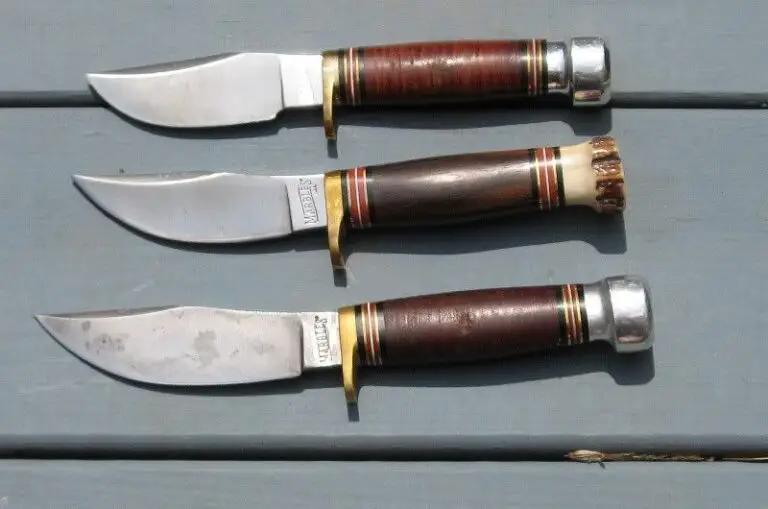The Camillus knives went to the war (WWI & WWII), was handcrafted for some presidents, and lived more than 100 years before the company shut down.
All of these make the recipe for a truly great knife that deserves our attention.
Like every other knife I’ve dated, the Camillus knives are challenging in their way. The good news is that I found multiple ways to determine how old your Camillus knife is.
Did your Camillus knife go to the war? Is it a genuine vintage or merely a reproduction? Find out more below.
Table of Contents
Brief History of Camillus Knives
You can jump to the following sections if you’re in a hurry, but I would advise that you don’t skip this part.
So, what’s unique about the history of the Camillus knives?
Adolph Kastor immigrated to the U.S.A. when he was 14 and worked in his uncle’s hardware company. This was where he first got a taste for cutlery, which would later shape the man he became and the company he launched.
By 1876, after his uncle’s company had to close shop due to poor sales figures, Adolph charted out a new path for himself.
He started importing and selling German-made knives to his U.S. audience. A German himself, and having spent enough time in the U.S.A. to know the market landscape, this business venture was not difficult for him.

After more than two decades (1897) in this business, importation costs for the knives were getting higher and wiping out Adolph’s profits. The only way to stay in the knife business and keep running a profit was to start making and selling them domestically.
Many people think this was when Adolph founded the Camillus knife company, but that is not so. Instead, he sought out a smaller cutlery brand in Camillus and joined the management team.
With decades of experience under his belt, Adolph spearheaded the growth and expansion of the Camillus knife company into what we know it as today.
When WWI and WWII came along, Adolph shifted the focus of the company to cater to U.S. soldiers and the Allied Forces. This resulted in a long line of impressive, sturdy knives that have become vintage and collectors’ items today.
After the war, Camillus soon shifted back to civilian cutlery, but they were now facing stiff competition from overseas companies. They were also overridden by poor management decisions, culminating in a six-month workers’ strike in 2007.
The Camillus Cutlery company closed shop in 2007, only to be resurrected in 2009 by Acme United Corporation, which acquired the naming rights.
Challenges with Dating Camillus Knives
Camillus knives are one of my most favorites knives to date. The brand started using tang stamps early enough, making it easy to tell the age of a Camillus knife.
There are also extensive catalogs on the knife brand, making my work easier.
For all that good, though, some bad actors have learned how to make fake Camillus knives and pass them off as vintage.
These fakes are even made with materials that age fast, tricking you into thinking that the knife has indeed seen a lot of years.
Camillus was also notorious for sometimes mixing up the tang stamps. If I am honest, they’re not the only ones to make this mistake. A similar issue occurs when dating the Kinfolks knife, but the chances of that error are slim.
Besides showing you how to date a Camillus knife properly, I also give some tips to avoid falling into the fake vintage Camillus knife scam.
Let’s get to it, then.
3 Methods to Date a Camillus Knife
Did you recently find a Camillus knife, and you’d like to know what era it came from?
Do you think your Camillus is older than your friend’s, but neither is sure?
No matter the reason for wanting to date that blade, these methods will get you an accurate year or an era, at worst.
#1 Check the Tang Stamps
This is usually where I first look at when dating knives.
Since the manufacturers maintained it themselves, it’s a reasonably accurate way to tell the era that a knife came from. Fortunately for us, Camillus changed their stamps enough to map each one to different periods.
The table below shows you different tang stamp designs and when they were circulated.
| Tang Stamp | Description | Year/ Era |
|---|---|---|
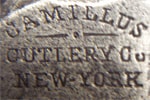 | 3-line arch stamp | 1902-1915 |
 | 4-line straight stamp with year | Features year of manufacture |
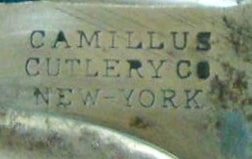 | 3-line straight stamp | 1916 – the 1930s |
 | 4-line straight stamp | The 1930s – mid-1945 |
 | 3-line; non-italic fonts; short underline | 1946 – 1950 |
 | 3-line; non-italic, full underline; no dots (USA., not U.S.A.) | 1960 – the 1970s |
 | 3-line stamp; full underline; dotted U.S.A.; italics | The 1970s – 1980s |
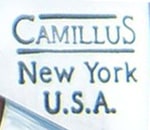 | 3-line stamp; dotted U.S.A.; mixed caps | 1989 – 2007 |
Source: AllAboutPocketKnives
The knife company was resurrected in 2009, and they continue to use the last tang stamp till today. I believe you’re more interested in dating the vintage ones, though, so the other era guides on that list are best suited to your needs.
#2 Check with Catalogues
If you can find old knife catalogs, they’re one of the best ways to date and identify your Camillus knives.
Knives made by top companies were featured in catalogs that were either internally maintained or sent out to dealers and collectors.
Knife collectors and dealers should still have those catalogs if you can find them.
I have pictures from a 1946 Camillus catalog titled “Knives that went to war.” Check the beautiful knives below:


That guide alone is not enough to go on, but it gives you a general clue into your knife’s era. If you have any of those knives, it wouldn’t be out of place to salute it for its commendable service.
#3 Speak with Knife Collectors and Dealers
You would often find knife collectors and enthusiasts who know a lot about these blades at knife shows.
If you don’t go to knife shows, you might also have some luck with veteran knife collectors in your locale.
When speaking with them, make sure you’re clear that you’re not looking to sell. Some shady knife enthusiasts might want to get the knife from you at a steal price – or in a swap deal for something else.
Did Camillus Make Other Brands’ Knives on Contract?
Camillus was so successful a knife brand that other knifemakers contracted them to manufacture their blades.
Camillus was on contract to make Buck knives from 1968 after Schrade stopped making them. The Camillus Cutlery company also produced:
- Newton knives;
- Robeson knives;
- Kabar knives;
- New Britain knives;
- Western knives;
- Saunders knives; and a few more knives under contract.
Their production capacity was expanded during the second world war when they had to manufacture a lot of high-quality knives to meet the needs of the soldiers shipping off to war.
Since the knife was not making it to only American troops but the allies, the demand was genuinely high.
At the end of the war, the decision to ramp up capacity paid off as Camillus could now make its knives and still churn others out under contract.
This guide to dating Camillus knives is focused on the Camillus-stamped knives only.
How to Identify Fake Camillus Knives
Okay, maybe not fakes. But there are clever reproductions that can fool you into thinking it’s the real thing.
If you don’t have both the repro and original side by side, you might not be able to tell the difference sometimes.
At a time like this, when not all dealers can be trusted, you need to be on guard.
Here are some ways to identify a fake Camillus knife:
- The tang stamps are all over the place;
- There is a mix of lower and uppercase letters;
- The font is a bit off;
- Short and curved false edge (as opposed to the long sweeping false edge of the WWII knife)
- Scabbards are marked with Eagle, Globe and Anchor
If you’re in the market for a vintage Camillus knife, make sure you know how to tell the real deal apart from the repros. Otherwise, have someone who does.
Where neither is possible, it’s best to stay away. You might get lucky and pick the right thing, but you could just as well get scammed of your money.

